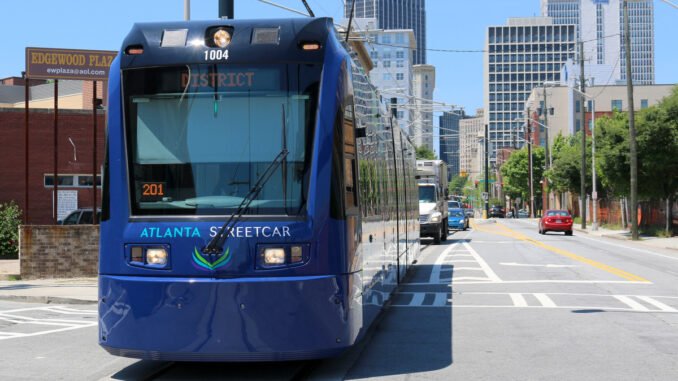
(The Center Square) — Atlanta once had a robust transportation network, with streetcars rumbling along the city’s streets and interurban lines connecting suburbs like Marietta and Stone Mountain.
But 75 years ago, the lines shuttered, replaced by new forms of transportation: Automobiles.
Transportation is an ever-present topic of conversation in the Atlanta region. Talk of commuter rail lines has made headlines for years, but progress hasn’t matched the promises, even as the city’s suburbs extend outward.
“The principal reason Atlanta and most other urban areas abandoned rail transit in favor of buses in the mid-20th century is buses were much cheaper, coupled with the growing household availability of private cars,” Marc Scribner, a senior transportation policy analyst for the Reason Foundation, told The Center Square.
In the Atlanta area, the Metropolitan Atlanta Rapid Transit Authority is spending more than $1 billion on expanding its system and replacing its aging fleet of railcars. In addition to spending $646 million on new railcars expected to start service in 2025, the agency plans to spend up to $215 million to extend Atlanta’s streetcar line eastward.
Simultaneously, the transit agency plans to expand its system into Clayton County. However, instead of adding to its rail network, the agency plans to spend $572 million to build a 22-mile-long bus rapid transit line with 17 proposed stops.
“When we took this before our board, our council members unanimously approved changing the direction from commuter rail to BRT because we recognize that economic development, workforce development, it’s synonymous with transit,” Jonesboro City Manager Ricky L. Clark said in an announcement at the time.
Officials in the Atlanta area and Georgia have long talked about passenger rail options in the state, ranging from an Atlanta-to-Lovejoy line to the “Brain Train” between Atlanta and Athens. As part of its $75 billion passenger rail proposal, Amtrak has said it wants to make Atlanta a railroad hub again.
“Transit has become a giant scam taking tens of billions of dollars a year from taxpayers and producing few to no benefits,” Randal O’Toole, director of the Thoreau Institute, told The Center Square. “It uses more energy and emits more greenhouse gases per passenger mile than the average car and even the average SUV.
“It hurts low-income people because 95 percent of them don’t use it, but they have to pay regressive taxes to support it,” O’Toole added. “It no longer can be said to relieve congestion because large numbers of people who used to work in congested areas now work at home.”
MARTA General Manager and CEO Collie Greenwood told The Center Square that “the way we’re going in those areas that don’t have transit, it’s just not sustainable” and said, “we are nowhere near the tipping point” when it comes to the amount of money spent on transit.
“Since the 1960s, transit across the United States — outside roughly half a dozen pre-automobile cities with legacy rail rapid transit systems — has been focused on providing a mode of last resort to those too poor to afford cars,” Scribner said. “This is to say providing basic mobility like mass transit is more of a social assistance service than a competitive transportation option.
“This also in part explains why poor households continued to concentrate in urban cores long after employers dispersed into the surrounding suburbs, which in turn acted as a ceiling on opportunity because the vast majority of jobs in a given metro area are inaccessible by transit in a reasonable amount of time,” Scribner added.
A reasonable amount of time typically amounts to less than two hours of daily commuting, or what urban economists call the “spatial mismatch hypothesis,” Scribner said.
“In recent decades, urban area poverty has started dispersing into the suburbs largely because cars became cheap enough that even many poor households could afford them, which has also improved their employment and social opportunities,” Scribner added.
This article was published by The Center Square and is republished here with permission. Click here to view the original.



